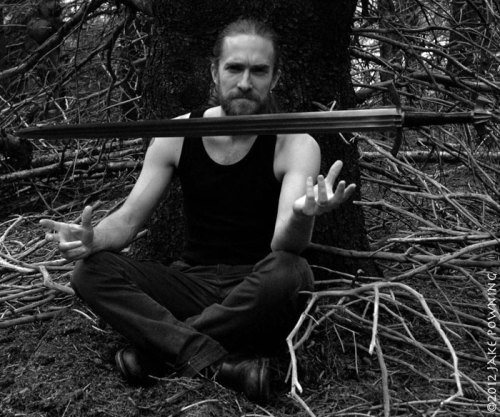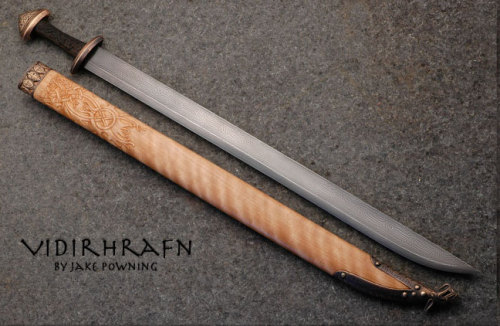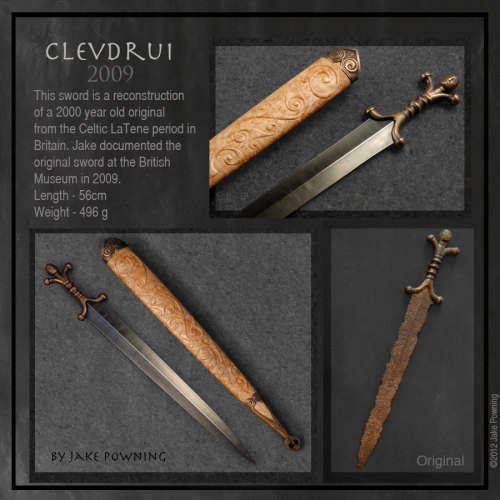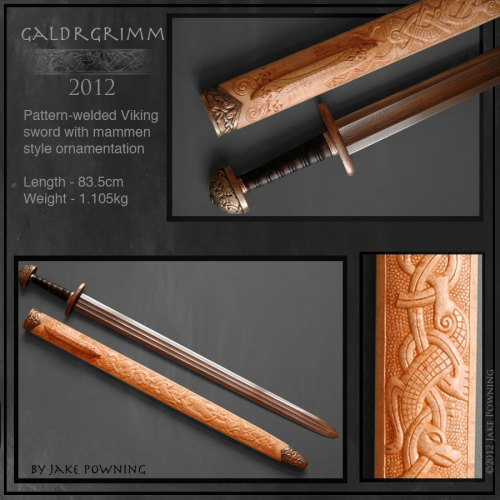art-of-swords:INTERVIEW: Jake PowningIn a world increasingly reliant on technological and electronic
art-of-swords:INTERVIEW: Jake PowningIn a world increasingly reliant on technological and electronic methods of production, many traditional practices and arts are fast becoming distant memories - practices like the noble art of swordsmithing.Thankfully there are those who seek to retain some of these “old ways” and pass on that knowledge to current and future generations. One of these people is Jake Powning, a well-known name in bladesmithing circles.Taking a closer look at his work reveals Jake to be more than just a sword smith; he is an artist and a teacher, an architect who draws as much inspiration from the environment as he does from ancient history and mythology.I was extremely fortunate to have him answer some questions for the blog, which you can read after the jump.Art of Swords: Can you tell us a bit about yourself?Jake Powning: I’m an artist living in a remote community close the coast of the Bay of Fundy in Atlantic Canada. I write, draw, carve, cast, photograph and make swords inspired by the land around me and by western mythology.Art of Swords: What ignited your passion for swords and the art of swordsmithing and how long did it take for you to learn the skills required?Jake Powning: I’d say it took me about ten years from the time I started trying to learn how to make swords until I started making pieces I was happy with.Art of Swords: Visitors to your website or blog can immediately see the amount of work that goes into making a sword. But on average, how long does it take for you to make a standard weapon? Jake Powning: Many of my swords take 300 to 600 hours to produce.Art of Swords: Can you take us through the common steps of creating a new sword?Jake Powning: The first step is to design the sword, for me this involves researching historical pieces, and then designing ornamentation inspired from historical themes to compliment the project. If the sword is pattern welded I have to forge weld the layers together and shape the blade. Then the blade must be ground to its final shape, filed, hardened and tempered so that it stays sharp and flexes instead of breaking under the rigors of use. The hilt is fashioned from wood, leather and metal, bronze, silver or iron, are shaped and carved, melted and cast. A scabbard is cut and fitted to the blade. The blade must be polished and etched to bring out the pattern in the steel. The scabbard is lined with sheered fleece and carved with runes and gripping beasts. Then all the pieces are put together, adjusted so they fit, and glued and peened so they protect the blade and the hand of the warrior, and compliment the sword as a weapon and as a talisman.Art of Sword: Your work is mostly inspired by European mythology. What drew you to that particular mythology, as opposed to other popular myths like those of the Greeks, Romans, Persians, Asians, etc. Jake Powning: I cut my teeth on Tolkien, his work was my introduction to western mythology, and when I was about eleven I read a copy of the Greek myths. I work with Northern European and Celtic mythology allot because it’s what is closest to me, especially the Celtic myths, and my path has lead me to explore the material culture of those ancient societies. But I have been influenced by world mythology, the Kalevala from Finland, Haida myth, Mi’kmaq legend, Japanese animism. I’m fascinated by the stories humans have told themselves over the millennia to explain the forces they didn’t understand in the world around them. My work is an exploration of Animism and human nature and the power of objects.Art of Swords: Did you have much in the way of encouragement along the way? And who would you class as mentors or inspiration?Jake Powning: Certainly, my parents are both artists so I grew up in a world full of creativity, but as an adult I’ve been encouraged and nurtured by many inspiring and generous people. The blade smith Don Fogg was really my biggest inspiration as a young man, I’ve also been helped and inspired allot by sword smith Peter Johnsson of Sweden and Owen Bush from Britain. John Howe has encouraged and inspired me as well. There is a small but close community of smiths and artists working in the tradition of western swordsmithing and watching each others work develop is a real inspiration.Art of Swords: Which of the swords/daggers you’ve created are closest to you sentimentally, and why?Jake Powning: I made a small sword that was a reconstruction of a Celtic anthropomorphic hilted sword from the British Museum that I examined, that was my favourite for a long time, but I think it’s the swords that I haven’t made yet that I’m the most drawn to.Art of Swords: Do you have any advice or words of wisdom for aspiring sword smiths looking to follow in your footsteps?Jake Powning: Forge your own path and don’t be afraid to try something new, the best work comes from following a feeling, there is no blue print for how to be a creative person, if what you’re doing is exciting, if you feel that you’re doing something real, then do it. Do it the way that makes sense to you until you become good at it. Try to find things that you can’t see and make them until you can. This is a process of discovery. And good luck. You need that too.Thank you for your time Jake.To keep an eye on Jake’s work you can visit his personal website here or follow him on Twitter here.Copyright © 2012 Art of Swords -- source link
Tumblr Blog : art-of-swords-deactivated201705.tumblr.com
#interview#jake powning#bladesmith#swordsmith#sword#swords#bladesmithing#swordsmithing




